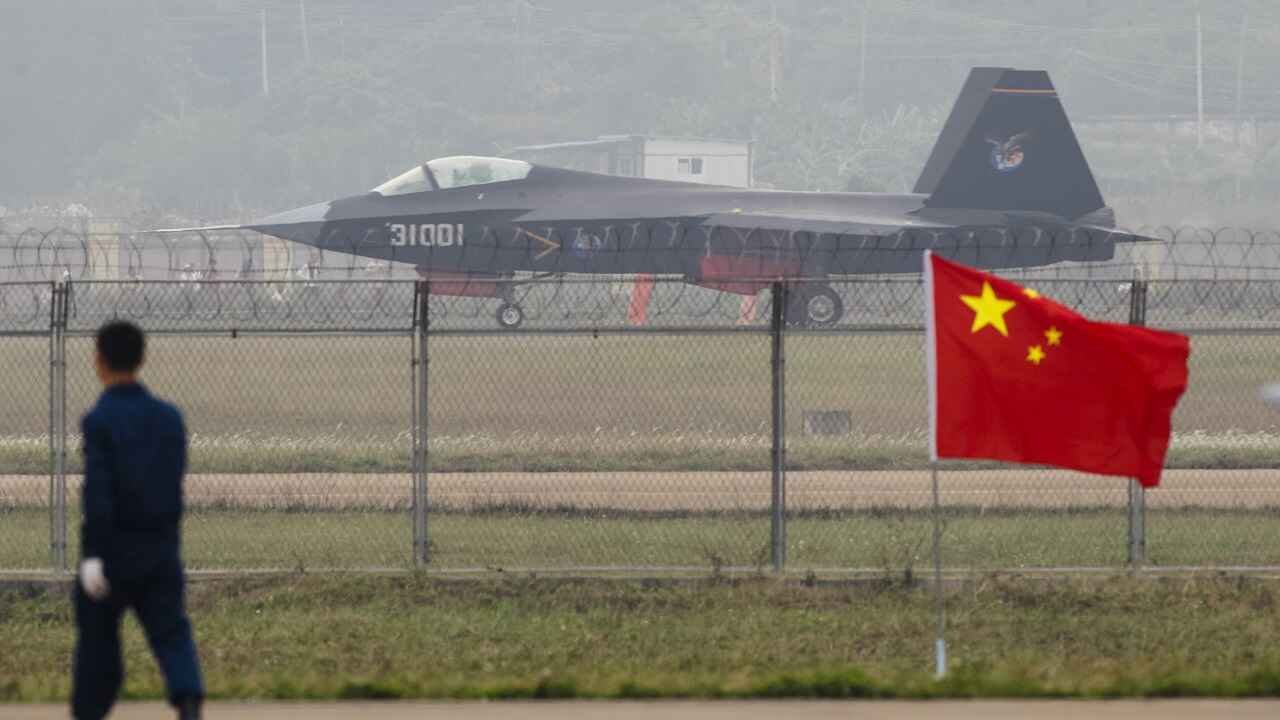With China’s mass production supremacy, once the H-20 Xi’an passes whatever tests the PLAAF wants to run on it, the Chinese will have these systems at scale.
China has let slip another element of their growing, sophisticated military challenge to the United States and its global dominance to the public. This time, this has taken the form of their much-hyped H-20 Xi’an long-range stealth bomber. The Pentagon issued a report that the H-20 Xi’an was “unlikely to make its debut until the 2030s.”
But the Defense Department’s assertions may have already been proven wrong. In January, images propagated throughout Chinese social media showing what appeared to be the H-20 Xi’an on a test flight. Although grainy, the fact that these images were posted and allowed to remain on Chinese social media indicates that this was, on some level, a state-sponsored publication made to appear as though it were a leak.
Chinese leaders want the Americans to know that, essentially, there’s a new sheriff in the Indo-Pacific, and that sheriff is the Communist Party of China (CPC).
The H-20 is a Game Changer
The H-20 Xi’an is one of the most important warplanes that the Chinese People’s Liberation Army Air Force (PLAAF) has ever conceived. A counterweight to America’s B-2 Spirit long-range stealth bomber as well as America’s newer B-21 Raider long-range stealth bomber—as well as to Russia’s proposed Tupolev PAK DA “Poslannik” long-range stealth bomber—the H-20 is an essential component for China’s burgeoning nuclear triad. It both equalizes Chinese airpower with that of the United States and, considering that the H-20 is a newer bird than the aging American B-2 (and that the B-21 Raider is nowhere near ready for battle), the H-20 might be a significant advantage for China.
A flying-wing aircraft like the B-2 Spirit stealth bomber, some analysts have speculated that the Chinese H-20 has an operational range exceeding 5,000 miles without refueling. If true, the bird could reach targets across the Indo-Pacific, potentially including U.S. military facilities in Guam—and possibly even farther than that if refueled in mid-air.
While there are scant details from Beijing about the plane, the H-20 can allegedly carry around 40 to 45 tons, making it capable of carrying a variety of munitions, including conventional and nuclear. What’s more, just like the Russian Tupolev PAK DA, the Chinese are designing the H-20 to deploy hypersonic cruise missiles.
So, too, are the Americans designing their new B-21 Raiders to deploy hypersonic cruise missiles. The key difference is that both Russia and China are around ten years ahead of the Americans in terms of the development and deployment of their respective hypersonic weapons arsenals, with Russia leading China.
The introduction of the H-20 into the PLAAF’s arsenal would significantly enhance China’s ability to project power and conduct anti-access/area-denial (A2/AD) strategies, particularly in regions like the South China Sea and Taiwan Strait. By potentially threatening US bases far from Chinese shores, the H-20 could seriously alter the strategic calculus in any potential military confrontation or deterrence scenario in the Indo-Pacific region.
The H-20 Earns High Marks in Scalability and Quality
Western sources have expressed skepticism that the H-20 is anything more than a simple knockoff of relatively old technology, such as the B-2 Spirit. However, this is a very dangerous assumption on the part of Western analysts. Frankly, China has caught up with the Americans in multiple technological domains.
And the fact that the Chinese are ahead of the Americans in hypersonic weapons technology, and that the H-20 can fire these weapons, while the Americans are still experimenting with their own hypersonic cruise missiles, indicates how much more advanced the Chinese have become technologically.
With China’s mass production supremacy, once the H-20 passes whatever tests the PLAAF wants to run on it, the Chinese will have these systems at scale. Compare that even with the older B-2 Spirit. Originally, the Americans had envisioned having hundreds of these units.
After 30 years of flying these systems, there are merely 19 of them (following the loss of one in a fire) in varying states of readiness. Indeed, the U.S. Air Force already wants to retire these birds in favor of the more advanced B-21 Raiders. But those planes are never going to reach the numbers that the Pentagon needs them to be at—not so long as an individual B-21 costs $700 million per plane!
China continues proving that quantity has a quality of its own. What’s more, as evidenced by the advances referenced earlier, it should be obvious by now that the Chinese have quantity and they are developing an increasing level of quality in their systems. If American defense planners were smart, they would see the H-20 Xi’an as a nightmare.
About the Author: Brandon J. Weichert
Brandon J. Weichert, a Senior National Security Editor at The National Interest as well as a Senior Fellow at the Center for the National Interest, and a contributor at Popular Mechanics, consults regularly with various government institutions and private organizations on geopolitical issues. Weichert’s writings have appeared in multiple publications, including the Washington Times, National Review, The American Spectator, MSN, the Asia Times, and countless others. His books include Winning Space: How America Remains a Superpower, Biohacked: China’s Race to Control Life, and The Shadow War: Iran’s Quest for Supremacy. His newest book, A Disaster of Our Own Making: How the West Lost Ukraine is available for purchase wherever books are sold. He can be followed via Twitter @WeTheBrandon.
Image: Shutterstock.
